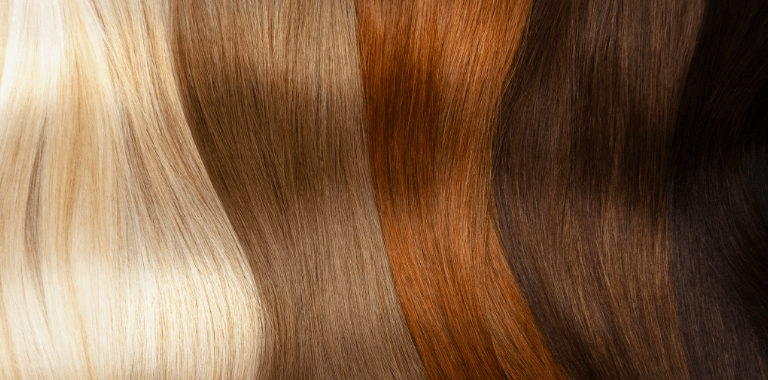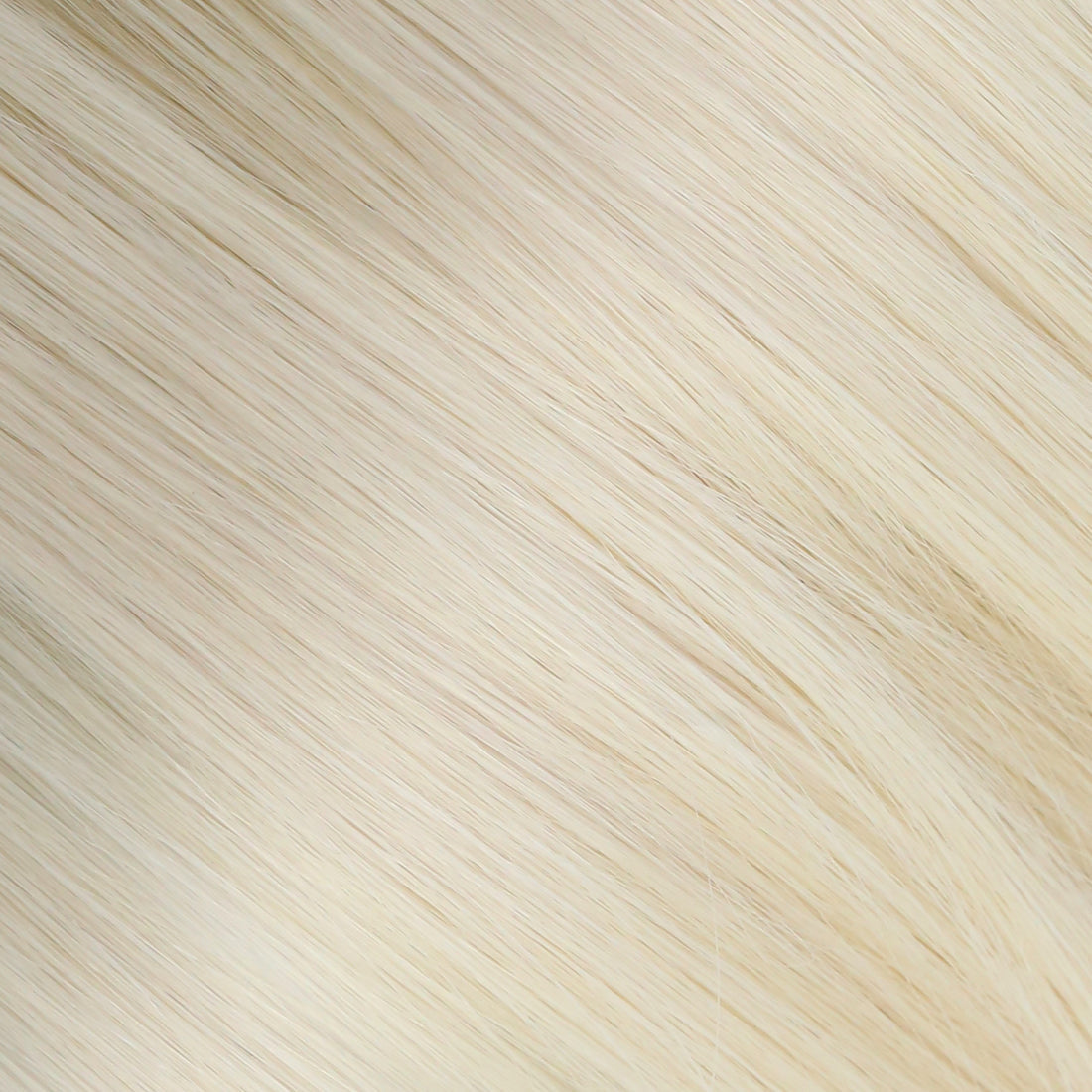Hair extensions have revolutionized the beauty industry, allowing individuals to easily transform their hairstyles with added length, volume, or color. However, many people may not be fully aware of the confusion: where do hair extensions come from or how they are sourced? Understanding the origins of hair extensions can provide insights into their quality, and the processes involved in bringing them to market. In this blog, we'll delve into the origins of hair extensions, exploring their different sources and the factors that impact their quality and ethical implications.
The Different Sources of Hair Extensions
Hair extensions primarily come from two sources: human hair and synthetic hair, which can be sourced from various origins. Each source offers different qualities and characteristics, impacting the appearance, durability, and care requirements of the extensions.
Human Hair
Human hair extensions are mainly divided into three types. Remy Human Hair is known for its natural look and durability, Virgin Human Hair offers versatility and purity, while Non-Remy Human Hair provides a more affordable option but may have different qualities.
Remy Human Hair
-
Definition: Remy hair refers to hair collected with the cuticles intact and aligned in the same direction. This method preserves the natural structure and minimizes tangling and matting.
-
Characteristics: Remy hair is considered the highest quality of human hair extensions. It looks and feels natural, blends well with your own hair, and can be styled with heat tools. The alignment of the cuticles ensures durability and a smoother texture.
Virgin Human Hair
-
Definition: Virgin hair is 100% natural human hair that has not been chemically treated or dyed. It is collected from a single donor, ensuring consistency in texture and color.
-
Characteristics: Virgin hair is highly prized for its purity and versatility. It can be dyed, curled, or straightened without compromising its quality. The absence of chemical processing makes it a premium choice for extensions.
Non-Remy Human Hair
-
Definition: Non-Remy hair is collected from various sources and may have cuticles facing different directions. It is often mixed and processed to achieve uniformity.
-
Characteristics: This type of hair is generally less expensive than Remy hair and may be prone to tangling and matting due to the cuticle misalignment. It often requires more maintenance to keep it looking its best.
Synthetic Hair
Synthetic hair extensions offer a range of options for those seeking an alternative to natural hair, which includes fiber-based and heat-resistant options. Fiber-Based Synthetic Hair is designed to mimic the look of natural hair while being more affordable. High-Temperature Fiber Hair provides heat resistance, allowing some styling with heat tools.
Fiber-Based Synthetic Hair
-
Definition: Made from various synthetic fibers like Kanekalon or Toyokalon, this type of hair mimics the appearance of natural hair.
-
Characteristics: Synthetic hair is less expensive and can hold its style well. However, it cannot be dyed or styled with heat tools, limiting its versatility. It's ideal for temporary or fashion-forward looks but may not offer the same natural appearance as human hair.
High-Temperature Fiber Hair
-
Definition: This type of synthetic hair is made from heat-resistant fibers that can withstand styling tools up to a certain temperature.
-
Characteristics: High-temperature fiber hair provides more flexibility than standard synthetic hair, allowing for some heat styling. However, it still does not offer the same level of customization and natural feel as human hair.
The Collection Process
Where do hair extensions come from? Well, most of hair extensions, especially human hair extensions, must come from collection at first, following by the processing and manufacturing.
Collection from Donors
The collection process for hair extensions can differ based on whether the hair is sourced from a single donor or multiple donors. Each method has implications for both quality and ethical considerations.
Single-Donor Hair
-
Process: Hair is collected from one individual, ensuring consistency in texture and quality. This type of hair is often used for premium extensions.
-
Ethics: Single-donor hair is generally considered more ethical as it involves a direct transaction with the donor, often accompanied by proper compensation.
Multiple-Donor Hair
-
Process: Hair from multiple donors is mixed together, which can vary in texture and color. This hair is typically less expensive and may undergo additional processing to ensure uniformity.
-
Ethics: The collection process for multiple-donor hair can be less transparent, and ensuring fair compensation for all donors is crucial for maintaining ethical standards.
Geographic Sources
The collection for hair extensions can also categorized according to various geographic regions, each offering unique qualities. The source of the hair can influence its texture, appearance, and ethical considerations.
Asian Hair
-
Countries: China, India, and Vietnam are major sources of hair extensions. In these regions, hair is often collected from individuals through religious or cultural practices, such as temple donations.
-
Characteristics: Asian hair is typically straight or wavy and is known for its thickness and durability. The collection processes can vary, and it's important to ensure ethical practices in sourcing.
European Hair
-
Countries: Hair from countries such as Russia, Ukraine, and Poland is often sought after for its fine texture and natural colors.
-
Characteristics: European hair tends to be finer and may have a more varied color range. It is often less processed compared to other sources, making it highly desirable for premium extensions.
South American Hair
-
Countries: Brazil and Peru are known for their vibrant and thick hair textures.
-
Characteristics: South American hair is typically thick and strong, with natural waves and curls. It can provide a voluminous and full look for extensions.
Processing and Manufacturing
Once collected, hair undergoes various processing steps to prepare for use as extensions, including removing impurities, aligning and conditioning, dyeing, and texturizing.
Removing Impurities
hair undergoes a thorough cleaning process to eliminate dirt, residues, and contaminants. This step also involves sorting the hair by texture, color, and length to ensure uniformity. Effective cleaning is crucial for ensuring the extensions are pristine and suitable for subsequent processing stages.
Aligning and Conditioning
In the aligning and conditioning stage, Remy hair is carefully processed to ensure that the cuticles are aligned in the same direction, preventing tangling and matting. The hair is then conditioned to enhance its softness, shine, and manageability. Proper cuticle alignment maintains the hair's natural appearance and texture, reducing the need for frequent upkeep and extending the longevity of the extensions.
Dyeing
Hair dyeing involves applying professional-grade dyes to achieve a range of colors. Specialized formulations are used to maintain the hair's quality while achieving vibrant and long-lasting results. High-quality dyeing techniques ensure that the color remains rich and true over time, all while preserving the hair's integrity and minimizing potential damage.
Texturizing
Texturizing extensions involves applying heat or chemical treatments to create curls, waves, or straightness, depending on the desired look. This process enhances the versatility of the extensions, allowing them to replicate various hairstyles and blend seamlessly with the natural hair. Proper texturizing ensures that the extensions integrate smoothly and achieve the intended style effectively.
A Comparison between Human Hair and Synthetic Hair
When choosing hair extensions, one of the key decisions you'll face is whether to opt for human hair or synthetic hair. Each type has its own set of benefits and limitations, making the choice dependent on your specific needs, preferences, and budget. Here's a detailed comparison to help you make an informed decision
Appearance and Feel
-
Human Hair: Human hair extensions offer a natural look and feel, closely resembling your own hair. They can be styled, dyed, and treated like natural hair, providing a seamless blend with your own hair. The texture and shine of human hair are generally superior, contributing to a more authentic appearance.
-
Synthetic Hair: Synthetic hair is designed to mimic the appearance of natural hair but often lacks the same level of realism. While advancements in synthetic fibers have improved their look and feel, they may not blend as seamlessly as human hair. Synthetic hair also tends to have a more artificial shine.
Styling and Versatility
-
Human Hair: One of the main advantages of human hair extensions is their versatility. They can be curled, straightened, and styled with heat tools just like natural hair. Additionally, human hair can be dyed and treated with various products to achieve the desired look.
-
Synthetic Hair: Synthetic hair generally cannot be styled with heat tools or dyed, limiting your options for changing its appearance. However, some high-temperature synthetic fibers can withstand low heat styling. Despite these advancements, synthetic hair is usually less adaptable compared to human hair.
Durability and Longevity
-
Human Hair: Human hair extensions are typically more durable and longer-lasting than synthetic options. With proper care, they can remain in good condition for several months or even years. They also tend to maintain their quality over time, making them a good investment for long-term use.
-
Synthetic Hair: Synthetic hair extensions generally have a shorter lifespan compared to human hair. They can show signs of wear and tear more quickly, and their appearance may degrade with frequent washing and styling. Synthetic hair typically needs to be replaced more often.
Maintenance
-
Human Hair: Maintaining human hair extensions requires regular washing, conditioning, and styling, similar to natural hair. They may also need periodic professional care to keep them looking their best. While maintenance can be more involved, it is necessary to preserve their quality and appearance.
-
Synthetic Hair: Synthetic hair is generally easier to maintain as it retains its style and shape after washing. It requires less frequent washing and does not need to be styled as often. However, it may need special products designed for synthetic fibers to keep it looking fresh.
Cost
-
Human Hair: Due to the higher quality and longer lifespan, human hair extensions are usually more expensive. The investment is often justified by their durability, natural appearance, and styling flexibility.
-
Synthetic Hair: Synthetic hair extensions are more budget-friendly, making them an attractive option for those looking for temporary or less expensive solutions. They offer a cost-effective way to achieve different looks without a significant financial commitment.
Conclusion
By explore the question: where do hair extensions come from, you may acquire valuable insights into their quality, ethical implications, and the processes involved in bringing them to market. From human hair sourced ethically and processed meticulously to synthetic alternatives designed for different needs, the variety of extensions available caters to a range of preferences and requirements. By choosing high-quality and ethically sourced extensions, you not only enhance your look but also support responsible practices within the industry.












